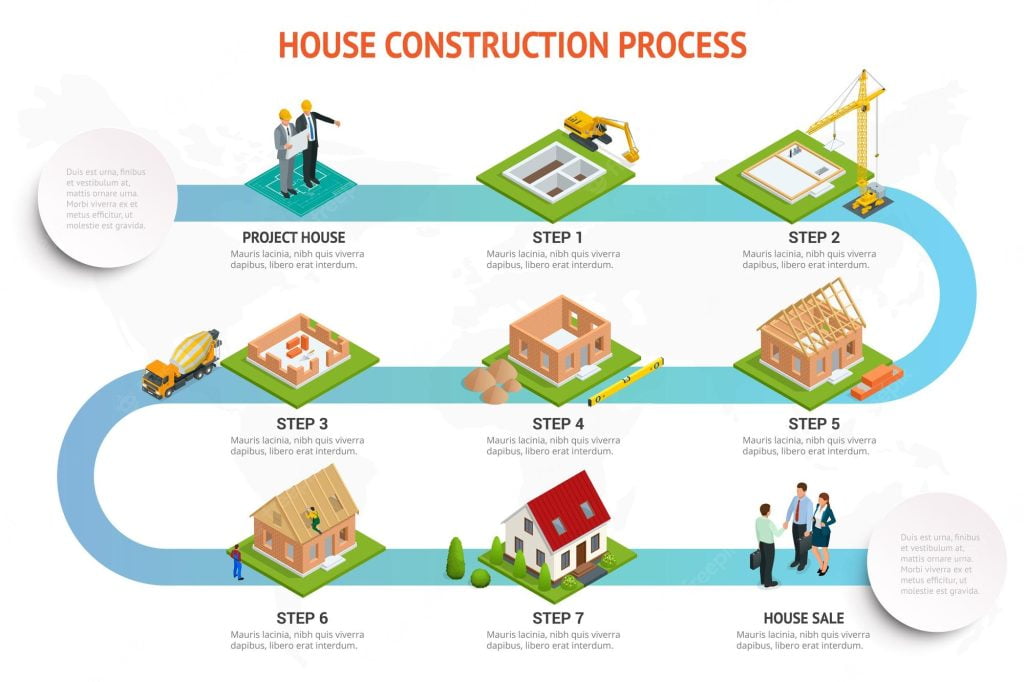Construction projects generally proceed in a fairly predictable sequence of events. Whether the project is small, like a home renovation or an office build, or large and complex, like a hospital or factory, they tend to follow the same pathway. The four stages of a construction project involve planning and pre-construction activities; the actual construction; commissioning and acceptance; and operations and maintenance. Each of these stages has its own objectives, challenges, risks, and rewards. Here’s more information on each stage of a construction project and how they all work together in the big picture.
Stage 1: Planning
The first stage of a construction project, planning, actually begins before any design work is done. In fact, it is a mistake to wait until the design is ready to apply for permits or to begin procurement of materials and services, as these are the first steps in the construction process. In the planning stage, you will put together a project scope, which is a detailed description of what the project is intended to achieve, who the stakeholders are, and what the project’s parameters are. You will also develop a project budget, which should include contingencies for risks and unforeseen events. Planning also includes activities like land acquisition, environmental reviews, and obtaining necessary permits from authorities.
Stage 2: Detailed Design and Tender
The detailed design and tender stage is where a construction project begins to take shape. In this stage, the design is finalised and procurement of materials and design services is begun. Construction contracts are put out to tender or the construction contractor is selected. The plan is to keep the design team up-to-date on the procurement process and be ready to present the final design to the owner at the end of the process. What you can expect during the detailed design and tender stage is a lot of communication and collaboration. The design team, the contractor, and the owner will all be sharing information and commenting on various design aspects. At the same time, you will also be putting together a project schedule that outlines when construction activities need to begin and when they need to be completed. The detailed design and tender stage is where a construction project begins to take shape
Stage 3: Contract
The contract stage begins when an agreement between the owner and the contractor is reached. This stage includes the construction period and the time when the contractor is executing the construction work and administering the contract. The main objectives of contracting in the construction project are to ensure that everyone involved understands the expectations and responsibilities, and to minimise any risks associated with the project. Contractual arrangements include the following: The contract stage begins when an agreement between the owner and contractor is reached
Stage 4: Construction
Construction is the period when the project is actually built. The owner’s representative, who is often the construction manager, is on site to help manage the project and ensure that it proceeds as planned. Contract termination and dispute resolution procedures are also put into place at this stage. Construction is a highly cyclical process. The flow of construction activities proceeds in a regular pattern, as does the feedback and information that flows back to the design team and the owner. As construction proceeds, deviations from the baseline are identified and reported to the owner and design team, who then work together to decide how to address these issues. The main objectives of construction are to complete the work according to the contract and to manage the risk of cost and schedule overruns.
Stage 5: Commissioning and Acceptance
The commissioning and acceptance stage is where the construction project reaches completion and the owner takes formal ownership. This stage also serves to verify that the project meets the requirements and expectations established in the project scope. During this stage, the owner’s representative will verify that the project has been completed according to the contract and that it meets the owner’s requirements. In the case of a commercial or industrial project, the operation and maintenance phase begins. For a building, this means the owner has taken possession of the building and is responsible for managing it.
Stage 6: Operations and Maintenance
During the operations and maintenance phase, the owner begins to use the project and to incur costs. The contractor may be involved in the O&M phase of the project if an operational/maintenance contractor has not been engaged. The operations and maintenance phase is where a construction project begins to generate benefits. The investment in the project is being realised through the production of goods and services and through the use of buildings. The operations and maintenance phase is where a construction project begins to generate benefits
Bottom line
Construction projects are complex undertakings that require careful planning and an awareness of the unique challenges associated with each phase of the process. The key to success is cooperation among designers, contractors, owners, and all other stakeholders involved with the project.



